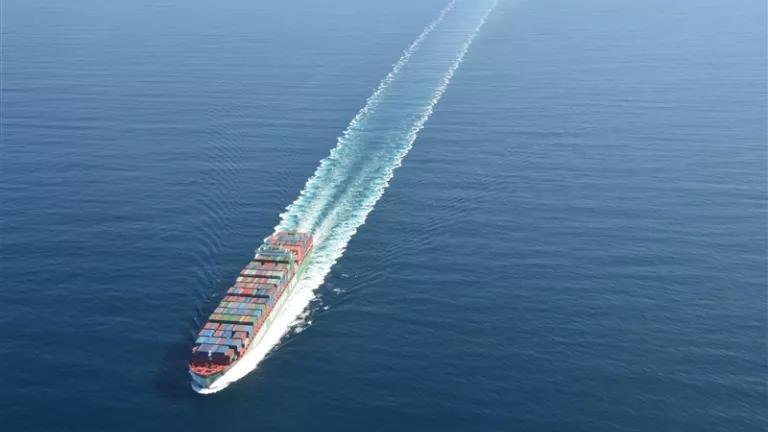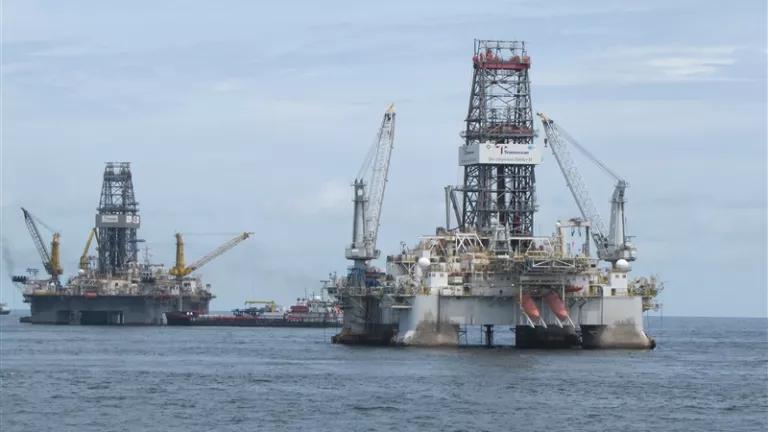You Can’t Fix High Pump Prices with New Offshore Leasing
While the fossil fuel industry would have you believe that the way out is for the government to lease more of our public lands and waters to oil and gas companies, the truth is that it would do nothing to alleviate the price crisis.

New offshore leasing would not affect oil and gas prices, but it would lock us into dirty fuel use for decades.
Russia’s horrific attack on Ukraine has sent shockwaves through the global energy supply chain, spiking oil and gas prices and squeezing people at the pump all over the world. While the fossil fuel industry would have you believe that the way out is for the government to lease more of our public lands and waters to oil and gas companies, the truth is that more oil and gas leasing would do nothing to alleviate the price crisis, but would lock us into dirty climate change-fueling resources for decades. As my colleague Josh Axelrod explained, more drilling on public lands will not solve the price crisis—and neither will more leasing in our ocean.
Industry is already sitting on more than 10 years worth of offshore oil and gas
Offshore activity accounts for 15 percent of total domestic oil production and around 3 percent of total U.S. natural gas production. In our federal waters, oil and gas companies already have the rights to over 11 million acres—an area 1.5 times the size of Maryland—less than a quarter of which they are drilling on. There is enough oil and gas supply in these leased areas to continue producing at high rates well into the 2030s and beyond.
In the Gulf of Mexico, where the vast majority of U.S. offshore oil and gas production takes place, the 384 active producing leases contain an estimated 4,652 million barrels of “proved plus probable” oil reserves (those that are already known to exist and be commercially viable) and 6,103 billion cubic feet of natural gas reserves. Together, this means that industry has access to the equivalent of 5,740 million barrels of oil, enough to fuel 215 million cars for a year. In addition to these proved reserves, there are also substantially greater amounts of already discovered oil and gas resources that could become economic under certain conditions.
Industry made a lot of noise about Biden’s leasing moratorium, but ending leasing in our ocean has no effect on prices. Oil and gas prices are set on the international market and certainly won’t be affected by offshore leases issued now that won’t be drilled on for another 5+ years, as is usually the case. And according to a forthcoming analysis done by energy analytics firm OnLocation, even if the government had offered no offshore lease sales beginning last year, the price of gasoline would be unaffected until 2035 - and even then, it will be only two cents per gallon higher than reference case price projections.
The U.S. has doubled oil production and tripled exports over the past decade
The U.S. is already the biggest producer of oil and gas in the world, having more than doubled its crude oil production since 2010. At the same time production has drastically ramped up, the U.S. has tripled the amount of oil and fuels it exports, equivalent now to 42 percent of our consumption. Our reliance on exports means that we are tied to the global oil market and any price fluctuations that occur on an international stage. More drilling in the U.S. won’t help lower oil prices here, but will help oil companies increase their already sky high profits.
We need to shift to alternatives
Offshore lease sales lock us into dirty destructive fossil fuels for decades. The oil spill in Southern California in October that soiled beaches up and down the coast occurred in an area leased to Beta Energy in 1978. Nearly 50 years later, we are still dealing with the consequences of that lease sale. It would be extremely short-sighted for the Biden administration to offer new lease sales. Instead, it should prepare its next OCS 5-year-program with no new leasing.
It’s not foreign oil we need to get off of—it’s all oil and fossil fuels.
To protect ourselves from price spikes, climate change, and the other economic and environmental impacts of fossil fuels, we need to double down on our investment in clean energy, electrification and efficiency. After all, a solar spill is just what you’d call a nice day. And the cost of wind and sun has remained consistent for the last several decades: absolutely free.




